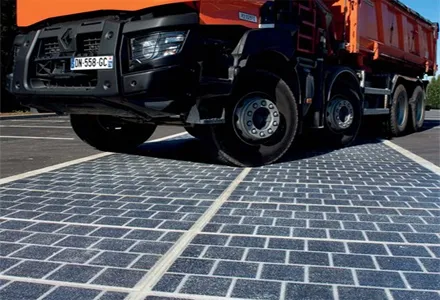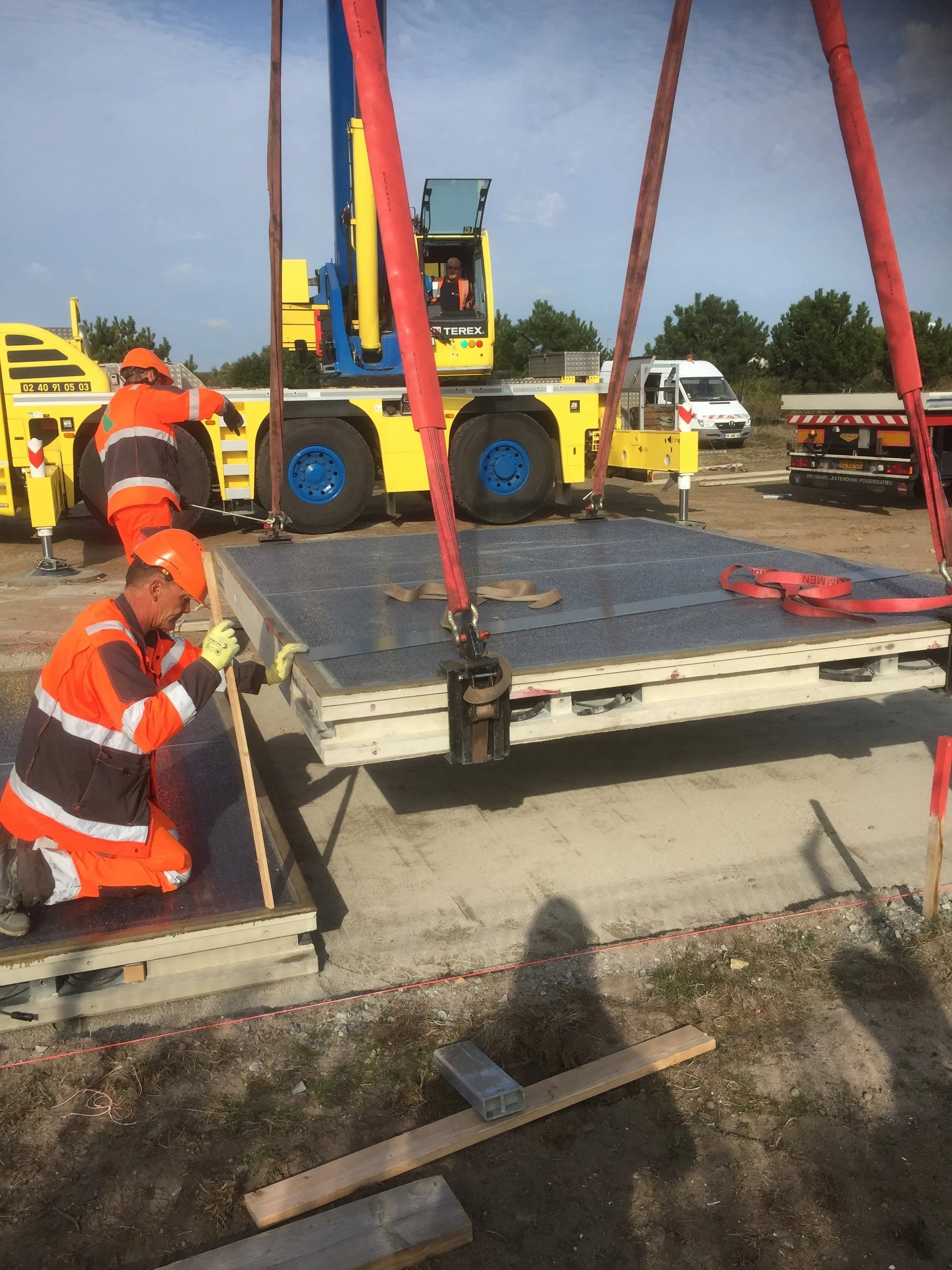In late 2014, SolaRoad, reportedly the first solar roadway, was opened in Amsterdam, along 70m of a cycle path between two suburbs of the Dutch capital.
SolaRoad consists of a cycle path constructed of concrete modules measuring 2.5m x 3.5m. In one lane, solar cells are fitted underneath a tempered glass top layer of around 1cm thickness, covered by a rough, transparent coating. The solar electricity from the road is fed into the electricity grid.
One year later, in November last year, the road generated around 9,800kWh, enough to provide three households with electricity, according to the project owners – TNO Research, the province of Noord-Holland, Imtech Traffic&Infra and Ooms Civiel.
SolaRoad is a three-year pilot project during which time measurements and tests are being performed. In the first year, 300,000 cyclists and mopeds used the path and no problems occurred. It was discovered, however, that the translucent coating was not optimal. Last winter a section of the coating became detached, caused by shrinkage of the material.
In consultation with the Vlaq group an improved coating was developed, which has now been applied.
This year, the plan is to lay another 20m of the optimised version of SolaRoad in the nearby town of Krommenie.
Dutch SolaRoad powers ahead
In late 2014, SolaRoad, reportedly the first solar roadway, was opened in Amsterdam, along 70m of a cycle path between two suburbs of the Dutch capital. SolaRoad consists of a cycle path constructed of concrete modules measuring 2.5m x 3.5m. In one lane, solar cells are fitted underneath a tempered glass top layer of around 1cm thickness, covered by a rough, transparent coating. The solar electricity from the road is fed into the electricity grid.
May 10, 2016
Read time: 2 mins







